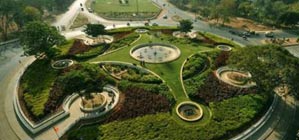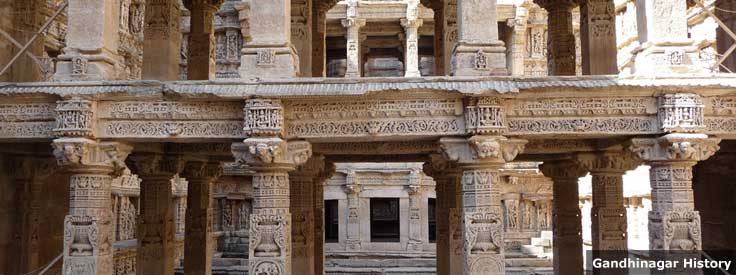Home
Gandhinagar History
Gandhinagar History
The Gandhinagar History is absorbing. The following section gives brief information About Gandhinagar History. During the thirteen century, the King of Pethapur, Pethasinh dominated over the town Shertha. After the expiry of the Pethasinh, the Sultanate of Patan used this ground as fight floor. The Sultan Ahmed Shah planned to relocate his capital from Patan to a new city, and developed Ahmedabad. During 1960 the Bombay state was divided into two states, Gujarat and Maharashtra. After split the Ahmedabad became capital city of Gujarat state, and a new capital city was planned to develop on the land which was part of Pethapur state.
History of Gandhinagar City
The new capital city was decided by the Chief Architect H.K. Mewada and his assistant Prakash M Apte. Both the Mewada and Apte had labored as trainees under the famous architect Le Corbusier in the Chandigarh project during 1950. The roads of Gandhinagar are given numbering and cross roads of Gandhinagar are given Gujarati alphabet. All the roads have crossing at every one kilometer, and at each crossing traffic circles reduces the speed of traffic.
Gandhinagar City History
 The city has well grown in four distinct phases:
The city has well grown in four distinct phases:
Phase 1: History of Gandhinagar in Gujarat from 1970 till 1980
After the town's infrastructure was completed in 1970 and till 1980, it was called as Gandhian city due to the fact that it was built on Gandhi's standards and principles.
Phase 2: Gandhinagar History from 1980 till 1990
From the year 1980 till the year 1990 there was very low pollution in the city, so it was once known as unpolluted city.
Phase 3: Gandhinagar City History after 1990
After the year 1990, many trees were planted in the city and the city became the green city.
Phase 4: Gandhinagar City History after 2002
In the year 2002, the Chief Minister of Gujarat Narendra Modi had put forward a new plan for the city that is to make city green, to make use of solar energy in the city, to make the city cosmopolitan.
Railway History in Gandhinagar
The following section gives information about Railway History in Gandhinagar. The new city is connected to Ahmedabad city by direct road, and the road distance between the new city and the Ahmedabad is 26.3 kilometers and the Khodiar railway station is 12.1 kilometers away from the new city.
The position of the suggested extension of the wide-gauge railway from Sabarmati to the Fertiliser Complex at Saij near Kalol and to the thermal power station located in the industrial areas in Gandhinagar was to run alongside the western boundary of the Gnadhinagar. It was planned to build a railway station in the center alongside the western boundary of the Gandhinagar. The new city was well connected by road, by railway and by airway to all parts of the state and the country.
